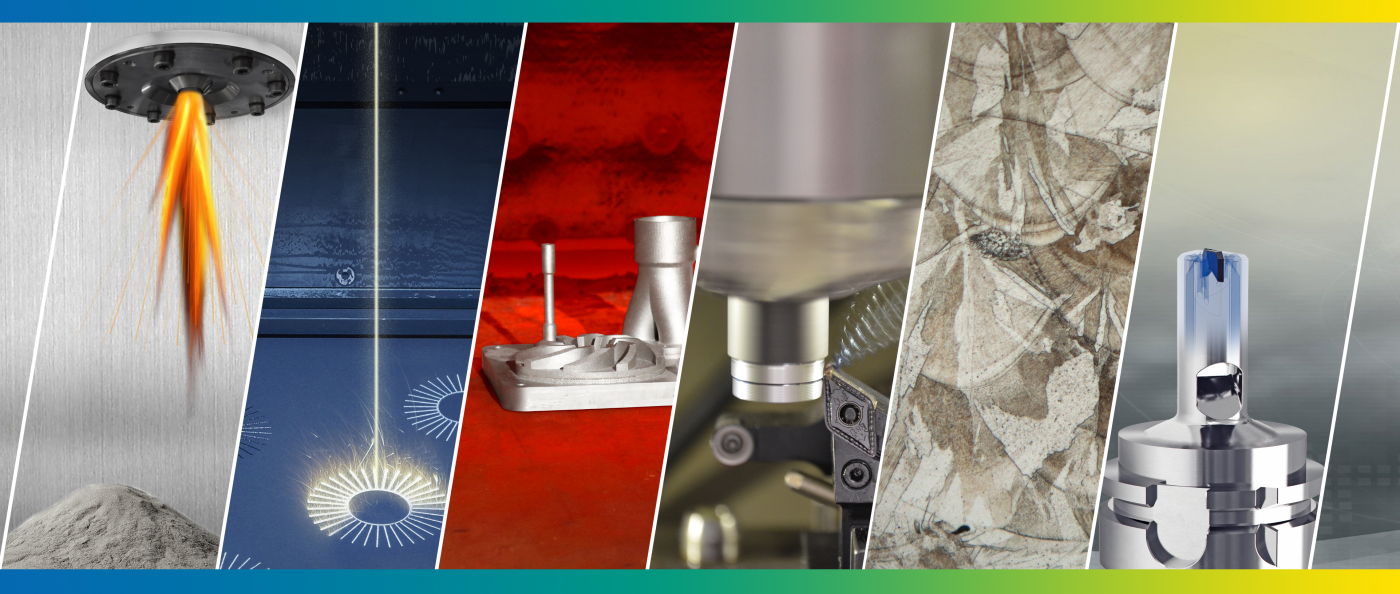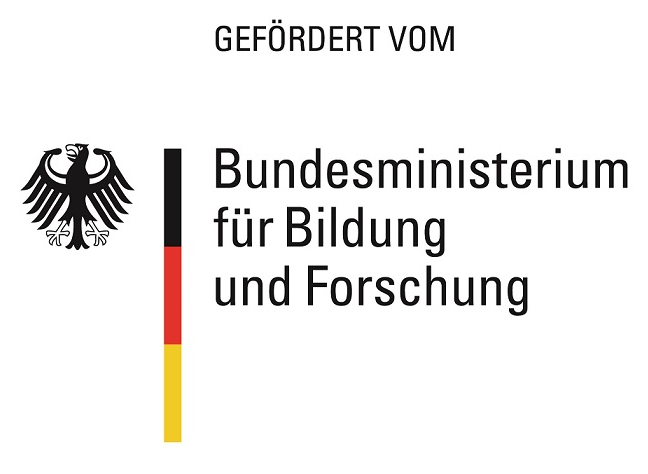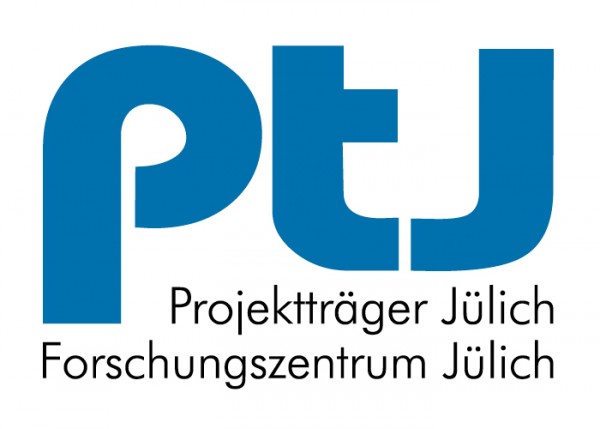Veröffentlichungen
| [1] | Graf, G.; Leoni, M.; Müller, T.; Fischer-Bühner, J.; Beckers, D.; Donisi, S.; Zanger, F. & Schulze, V. (2019), „Efficient parameter development strategy of tool steel materials for Laser Additive Manufacturing“. Holistic innovation in Additive Manufacturing. Abstract The requirements regarding the materials in use are steadily increasing in the AM market. As part of a GER-CAN research project (HiPTSLAM), the development of high-performance tool steels for AM is a promising topic regarding the acceptance of LPBF technology for functionally optimized die, forming and cutting tools.
Therefore, a holistic development process to efficiently qualify new materials is introduced and its advantages are shown based on a case study with a maraging tool steel. The chemical composition of the steel was particularly developed for the use in the LPBF process to achieve beneficial performance properties. In the case study, effects of the LPBF parameters are evaluated on the material properties. Based on initial microstructure analysis, a promising set of parameters is used to build samples for heat treatment studies and mechanical characterization.
By means of further investigations on the process interfaces, it will be possible to optimize the interaction of the whole LPBF process chain to increase the number of qualified materials with better performance properties. |
|
| [2] | Graf, G.; Leoni, M.; Müller, T.; Fischer-Bühner, J.; Frey, M.; Beckers, D.; Donisi, S.; Zanger, F. & Schulze, V. (2020), „Thermal insulation and laser-based preheating method for processing a ledeburitic tool steel in LPBF“. Holistic innovation in Additive Manufacturing. Abstract As part of a GER-CAN research project (HiPTSLAM), the development and holistic processing of high-performance tool steels for AM is a promising topic regarding the acceptance of LPBF technology for functional optimized die, forming and cutting tools.
One of the primary problems at processing hardly weldable tool steels with increased carbon contents (? 0,4 wt%) in LPBF is the high risk of hot cracking due to the local stresses associated with the martensitic transformation. Possible solutions on this issue are based on complex external preheating systems from the top (e.g. infrared radiators) or the bottom (e.g. base plate heaters) to reduce the thermal gradients and thus the risk for hot cracking during solidification. Within the HiPTSLAM project another more efficient possibility should be examined, which consists of a preheating strategy with the two already available 400 W laser sources on a SLM?280 and a thermal insulation layer to keep the temperature inside the base plate and the part as constant as possible.
The new preheating method will be tested with a newly developed, ledeburitic tool steel with a carbon content of more than 1,3 wt%. The results will be validated against a commercially available 500 ?C preheating system. |
|
| [3] | Graf, G.; Neuenfeldt, M.; Müller, T.; Fischer-Bühner, J.; Beckers, D.; Donisi, S.; Zanger, F. & Schulze, V. (2021), „Efficient Qualification Strategy of New Steel Alloys for Laser Powder Bed Fusion“, Advanced Materials Research, Band 1161, 10.4028/www.scientific.net/AMR.1161.27 Abstract The requirements regarding the materials in use are steadily increasing in the AM market. As part of a GER-CAN research project (HiPTSLAM), the development of high-performance tool steels for AM is a promising topic regarding the acceptance of LPBF technology for functionally optimized die, forming and cutting tools. Therefore, a holistic development process to efficiently qualify new materials is introduced and its advantages are shown based on a case study with a maraging tool steel. The chemical composition of the steel was particularly developed for the use in the LPBF process to achieve beneficial performance properties. In the case study, effects of the LPBF parameters are evaluated on the material properties. Based on initial microstructure analysis, a promising set of parameters is used to build samples for heat treatment studies and mechanical promising set of parameters is used to build samples for heat treatment studies and mechanical characterization. By means of further investigations on the process interfaces, it will be possible to optimize the interaction of the whole LPBF process chain to increase the number of qualified materials with better performance properties. |
|
| [4] | Graf, G.; Nouri, N.; Dietrich, S.; Zanger, F. & Schulze, V. (2021), „Dual-Laser PBF-LB Processing of a High-Performance Maraging Tool Steel FeNiCoMoVTiAl“, Materials, Band 14, S. 1-18. 10.3390/ma14154251 Abstract As part of an international research project (HiPTSLAM), the development and holistic processing of high-performance tool steels for AM is a promising topic regarding the acceptance of the laser powder bed fusion (PBF-LB) technology for functionally optimized die, forming and cutting tools. In a previous work, the newly developed maraging tool steel FeNiCoMoVTiAl was qualified to be processed by laser powder bed fusion (PBF-LB) with a material density of more than 99.9% using a suitable parameter set. To exploit further optimization potential, the influence of dual-laser processing strategies on the material structure and the resulting mechanical properties was investigated. After an initial calibration procedure, the build data were modified so that both lasers could be aligned to the same scanning track with a defined offset. A variation of the laser-based post-heating parameters enabled specific in-situ modifications of the thermal gradients compared to standard single-laser scanning strategies, leading to corresponding property changes in the produced material structure. An increase in microhardness of up to 15% was thus obtained from 411 HV up to 471 HV. The results of the investigation can be used to derive cross-material optimization potential to produce functionally graded high-performance components on PBF-LB systems with synchronized multi-laser technology. |
|
| [5] | Neuenfeldt, M.; Zanger, F. & Schulze, V. (2021), „Influence of LPBF process parameters on milling of a maraging tool steel“. MM Science Journal, 10.17973/MMSJ.2021_11_2021148 Abstract As the process parameters in the LPBF-process influence the microstructure, density and hardness of the produced parts, their influence on the milling process is suspected. For this reason the new maraging tool steel alloy Specialis® has been investigated on its machinability depending on the built parameters. The influence of the energy density, laser power and scan speed in the LPBF-process on the milling process Specialis® is examined. During the milling process the process forces are measured as well as the obtained surface roughness. The results confirm the importance of adjusting the process parameters in the LPBF-process to the finishing process. |


